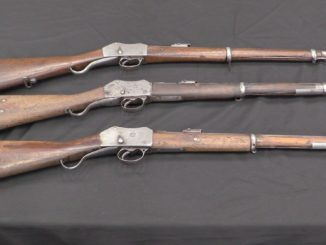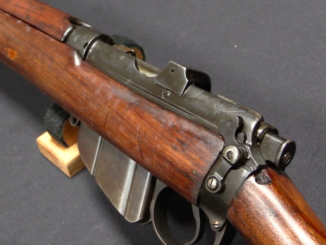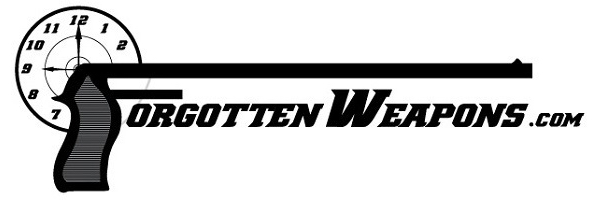Henry Nock was a highly respected and very talented British gunsmith, who manufactured a wide variety of arms including military muskets for the British Army. He is probably best known on the internet for his 7-barreled volley gun (which fires all seven charges simultaneously), intended for naval ship boarding operations. This particular gun resembled that volley gun design, but is actually a self-priming flintlock pepperbox. Its cluster of 6 barrels is manually rotated, allowing the used to fire six separate shots before needing to reload. The priming mechanism and lock bear a remarkable similarity to the Collier repeating flintlocks, and it is suspected that this system was developed by Artemis Wheeler of the United States.
Related Articles

Single Shot Rifles
Afghan Martini Carbines: The Kabul Arsenal (Video)
In the late 1880 or early 1890s, a British engineer and adventurer settled himself in Kabul, Afghanistan and at the request of Emir Abdul Rahman organized and build a rifle factory for the Afghan government. […]

Bolt Action Rifles
Britains First Standard Trainer: the No 2 Mk IV*
This rifle is coming up for sale at RIA on June 23. The British military started using training rifles in 1883, with the .297/.230 Morris cartridge in adapted Martini rifles. This would give way to […]

Handgun
Lancaster Howdah Pistols at RIA
Charles Lancaster was a master London gunsmith who made 2-barrel and 4-barrel pistols in a variety of British revolver cartridges (commonly known as Howdah pistols). Many of his pistols was purchased privately by British military […]

Oh yes! It was a terrible one! 😀
Unlike a Colt-type revolving longarm, an accidental flashover in this would simply fire everything at once like a volley gun.
While the recoil might be a bit more than the shooter was expecting, the only one who would really have to worry would be the original intended target. Plus anyone standing near him, of course.
cheers
eon
Or almost any of the Bernard Cornwell”Sharpe” series novels.
If you know them not, go for them.
Cornwall is an excellent researcher, knows his business, and writes a really good battle.
https://en.wikipedia.org/wiki/Wilkinson_Sword
Wiki article on Henry Nock’s company today.
“You can fill this up with priming powder”…is priming powder a different type of gunpowder, or just what you call the gun powder used for that step?
“is priming powder a different type of gunpowder”
Exactly! The priming powder is fine grained (as I know, mostly FFFFg) black powder.
Priming powder is a matter of debate, but most who have looked into the idea do not believe a different powder was regularly used for priming flash pans than was used for the main charges. F (cannons and large bore long guns), FF (most 50 caliber plus muskets and rifles) FFF (pistols and smaller bore long guns)gunpowder were what was available not the FFFF stuff many who shoot flintlocks today opt for in the pan hoping to speed up ignition, but others have shown that using regular powder in the pan works just fine if your lock is performing properly.
One minor point – while I can’t tell from the video for this particular firearm, I do know that high-end London gunsmiths (which Nock certainly was) often used gold or even platinum for both their lockplate inlays and especially to line the priming pan and vent. The shiny and clean condition of these parts on this gun, without any disturbance of the surrounding patina, leads me to suspect that they are actually gold, since exposure to burning black powder very quickly turns brass black.
How heavy is this weapon?